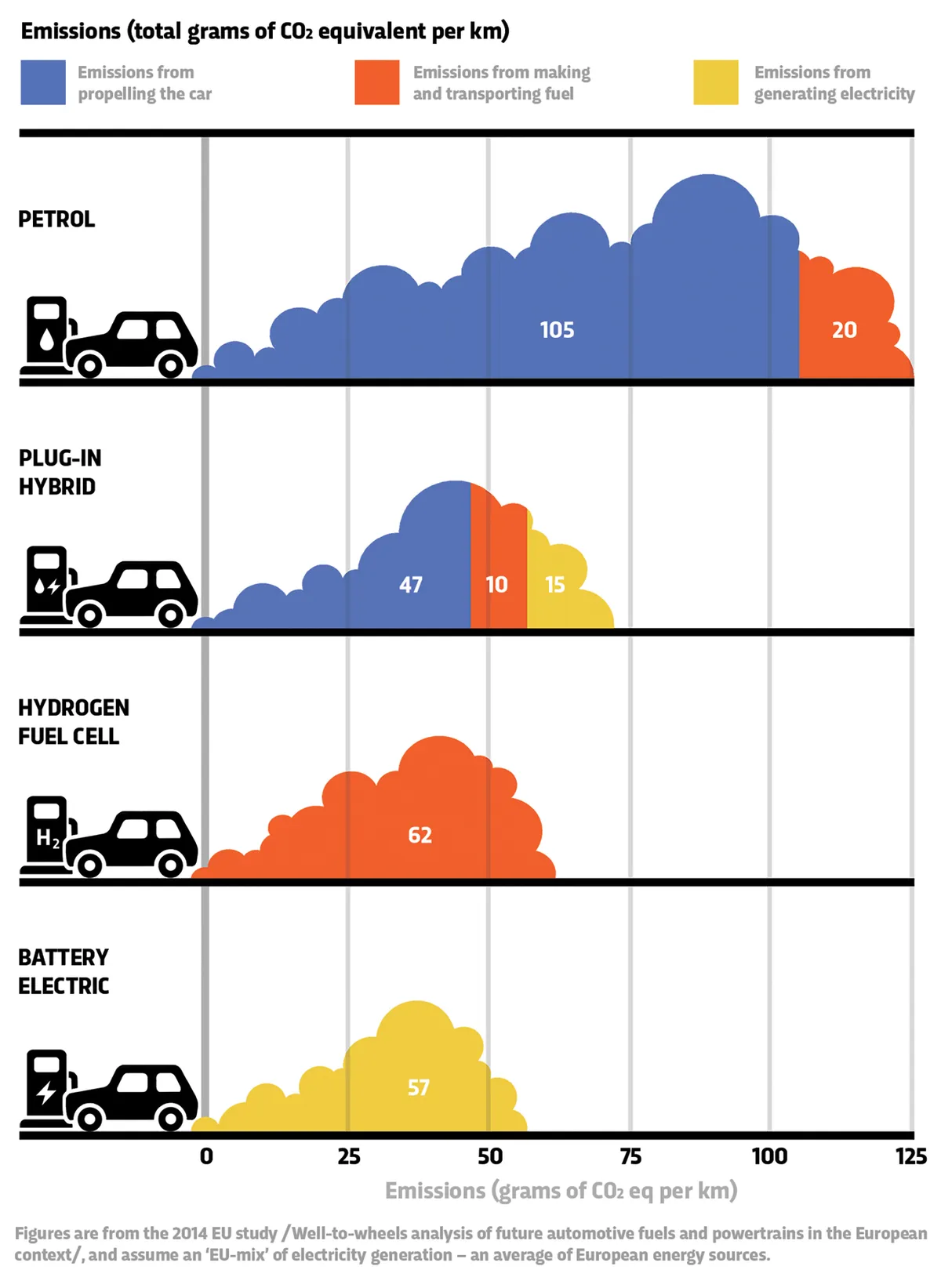We teamed up with the folks behind BBC World Service’sCrowdScienceto answer your questions on one topic. You can tune in toCrowdScienceevery Friday evening on BBC World Service, or catch up online atbbcworldservice.com/crowdscience
Manufacturers are now convinced that they can build electric cars with a comparable range and speed to their petrol counterparts. The key is developing cheaper and lighter lithium-ion batteries that can store ever more energy. The technology still isn’t mainstream: in the UK, just 1.5 per cent of cars come with plugs. However, in Norway, where there are huge tax breaks and perks like being able to use bus lanes, it’s up to 29 per cent. This shows that, with government incentives, people are willing to start driving electrics, and sales are predicted to spike when the price falls to the level of a petrol equivalent – forecast to happen in the early 2020s.
How do electric cars compare with petrol cars?
The green credentials of your electric car depend on how power is generated where you live. If you have solar panels, then your driving will be free of emissions. If your electricity comes from a local plant that’s powered by fossil fuels, then you’re just shifting your greenhouse gas emissions from your exhaust to its chimneys. But even in areas with the dirtiest coal-fired plants, electric cars still have lower CO2 emissions overall. This is because large power stations turn fuel into energy more efficiently than multiple, small engines, and it’s easier to clean up the exhaust in their towering chimney stacks. And unlike petrol cars, electric cars will get cleaner if a wind farm or other renewable energy source opens up nearby.
Are hydrogen cars greener than electric cars?
An electric car with a hydrogen fuel cell instead of a lithium-ion battery offers a compelling prospect: emissions-free driving (the hydrogen combines with oxygen from the air, and the exhaust is water), coupled with fast refuelling. It takes five minutes to replenish tanks of compressed gas, versus at least 40 minutes to top up a modern electric car. Currently, most hydrogen is made from natural gas, which is an energy-intensive process that needs high temperatures. One day, hydrogen could be made via electrolysis (splitting water) using solar-supplied electricity, making it as green as any renewables-powered electric car.

Read more:
- Is it better for the environment to be buried or cremated?
- Are space launches bad for the environment?
Subscribe to BBC Focus magazine for fascinating new Q&As every month and follow @sciencefocusQA on Twitter for your daily dose of fun facts.